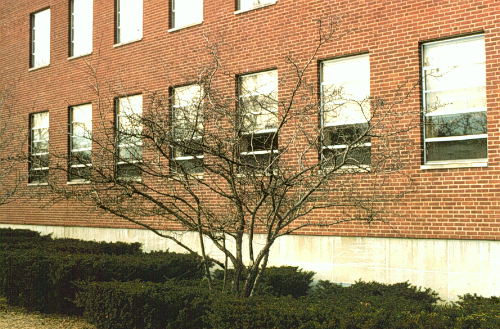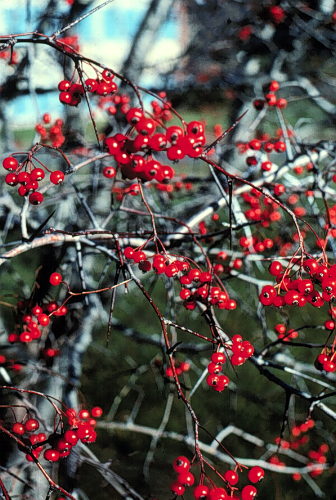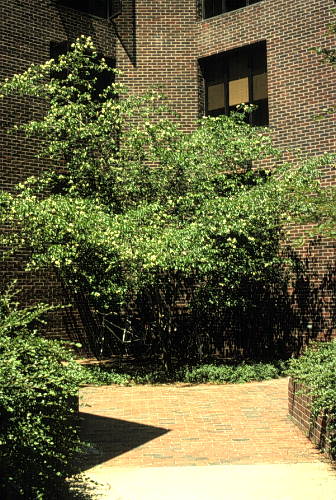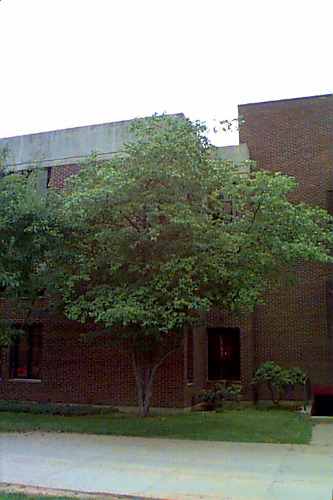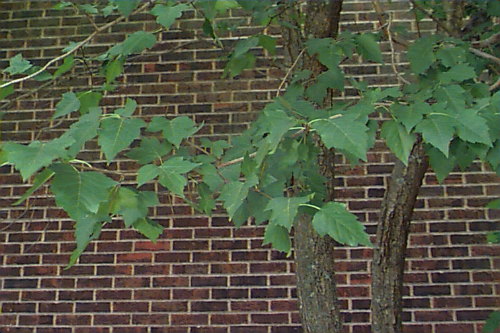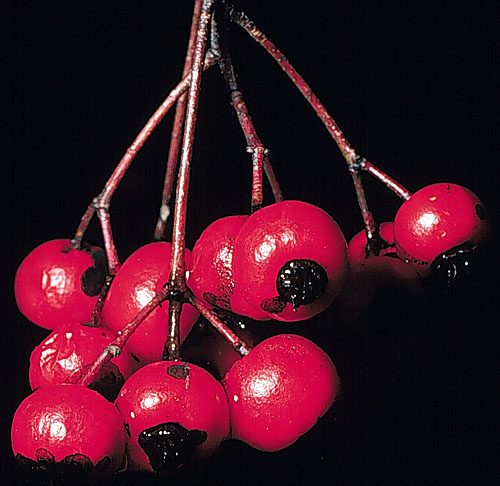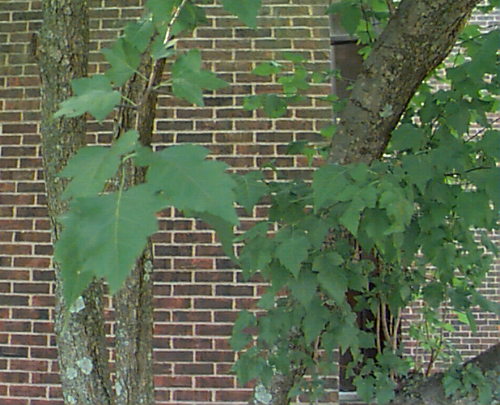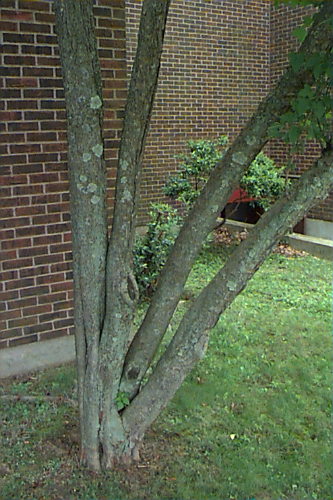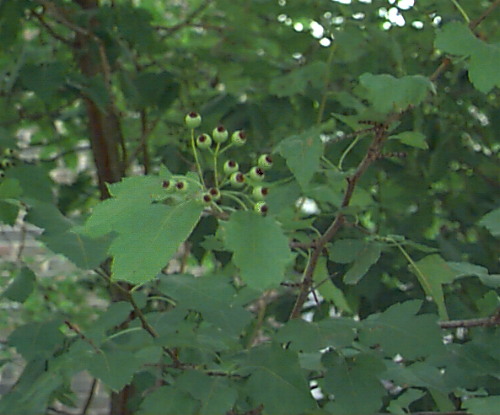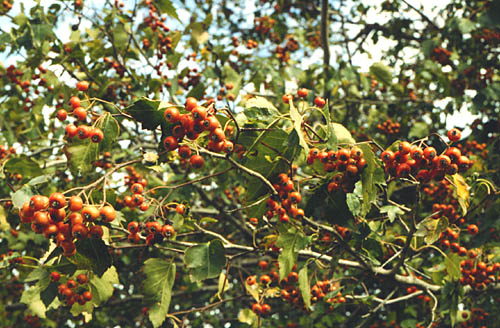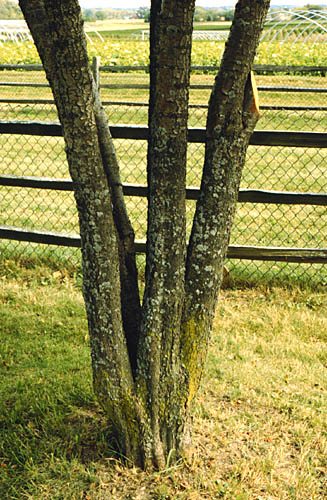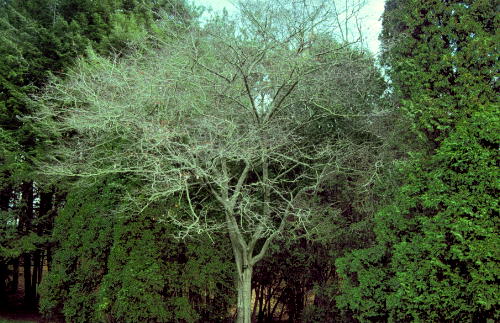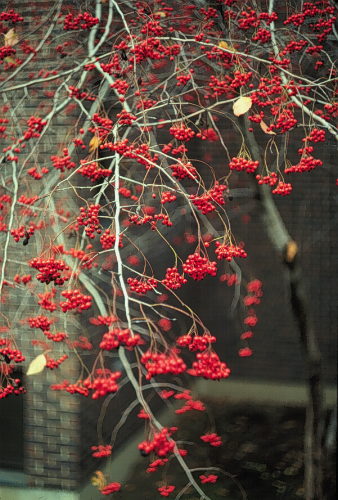Crataegus phaenopyrum
Washington Hawthorn
Rosaceae
ExpandHabitat
- native range is Virginia to Alabama
- hardy to zone 4
Habit and Form
- a medium-sized deciduous tree
- 25' to 30' tall
- 20' to 25' wide
- broad, rounded tree
- medium texture
Summer Foliage
- simple, lobed leaves
- alternate leaf arrangement
- leaves emerge reddish and mature to a dark green
- serrated leaf margins
- 1" to 3" long
- about two-thirds as wide
- subcordate leaf base
Autumn Foliage
- orange to red fall color
- moderately showy
Flowers
- white flowers
- 0.5" in diameter
- blooms early in June
- short bloom time only 7 to 10 days
Fruit
- a red pome
- 0.25" in diameter
- matures Sept. to October
- persist through the winter
- birds eat fruit
Bark
- stems are slender and brown
- 1" to 3" long thorns along stems
- mature bark is "apple-like"
Culture
- easy to grow
- prefers moist, fertile soil
- prune tolerant
- full sun is best
Landscape Use
- specimen tree
- screen border
- prune into hedge
Liabilities
- thorns can be hazardous
- tends to have many pest problems similar to apple trees
ID Features
- 1" to 3" long thorns along stems
- a medium-sized deciduous tree
- 25' to 30' tall and 20' to 25' wide
- broad, rounded tree
- simple, lobed leaves
Propagation
- by cuttings
Cultivars/Varieties
'Fastigiata' and 'Princeton Sentry' (Princeton Sentry™) - These are fastigiate forms with columnar habits, to 30' tall and 20' wide. 'Princeton Sentry' has almost thornless branches.
'Vaughn' (also seen as x 'Vaughnii') - A hybrid with C. crusgalli, this small tree has exceptional red fruit that is long-lasting and borne profusely. There are different reports concerning its disease susceptibility, however, with some claiming heavy incidence of rust.
